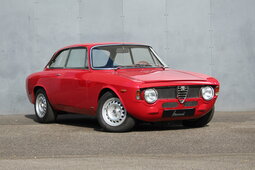Hybrid Technology: The Immediate Future of the Automotive Industry
Numerous automotive CEOs believe that hybrid vehicles, rather than purely electric cars, represent the immediate future of the industry. This perspective is grounded in the dual advantages that hybrids offer, combining the benefits of both combustion engines and electric powertrains.
The Evolution and Impact of Hybrid Vehicles
The vehicle is capable of navigating roads solely on electric power, which proves beneficial during urban commutes or in congested traffic.
On journeys beyond city limits, the internal combustion engine becomes advantageous. It enables the hybrid car to operate continuously until the fuel reserve is depleted.
For many, hybrid propulsion appears as a recent innovation. A significant number view Toyota as the trailblazer in hybrid vehicle technology, having launched the renowned Prius in 1997.
Indeed, the world's largest car manufacturer has played a crucial role in advancing and popularizing hybrid technology. However, the origin of this concept predates Toyota and many other automobile companies. The inception of the hybrid vehicle occurred much earlier, not merely 40 or 60 years ago.
The Armstrong Phaeton: A Historic Milestone in Hybrid Technology
Introducing the Armstrong Phaeton, the pioneering hybrid vehicle that debuted in 1896. The Armstrong Phaeton was developed under the guidance of the remarkably ingenious and adept engineer, Harry E Dey. This individual dedicated his life to the design of an electric car that was practical for daily use.
Harry E Dey was convinced of the promising future for electric vehicles. Yet, he encountered the most significant challenge that still plagues electric cars today: batteries depleting their charge and the inability of technology to sufficiently address this issue.
In 1895, Harry E Dey built his inaugural electric vehicle. The idea of a silent and eco-friendly mode of transportation quickly garnered a multitude of enthusiasts, serving as a substantial surge of encouragement for the leader of a newly founded enterprise.
The ingenuity and innovative proposals of Mr. Harry E Dey soon caught the attention of the Roger Mechanical Carriage Company, which was marketing Roger-Benz vehicles under a license from Benz & Cie (present-day Daimler) in France.
Upon recognizing the vast potential of the United States, Emile Roger, the company's founder, ventured into numerous countries with exotic names. His mission was to find collaborators who could adapt the carriage to meet American preferences. And guess what? Harry E Dey was selected as one of the individuals charged with the responsibility of enhancing the Roger Mechanical Carriage Company's formula for success.
Contrary to what many expected, Harry E Dey was not content to simply make minor adjustments and enjoy the resulting financial rewards. He chose instead to design an entirely new vehicle tailored to the requirements of two distinct customer groups: those desiring to travel exclusively by electric power for certain distances, and those needing to cover longer distances daily. This led to the creation of the Armstrong Phaeton, arguably the first car powered by hybrid technology.
The most notable aspect of this vehicle is its hybrid propulsion system, which featured a petrol-powered, 6.5-litre, two-cylinder engine, a battery that was not the most powerful on the market, and a DC generator. This setup enabled the Armstrong Phaeton's engine to start without the then-common starter handle—a remarkable feat, especially considering that this became a standard feature 16 years later with Cadillac.
Among the remarkable features of the Armstrong Phaeton, a few other innovations stand out, including an electromagnetic clutch and a three-speed automatic transmission. This vehicle was among the pioneers in demonstrating that a clutch pedal was unnecessary. Moreover, it is reported by various sources that the Armstrong Phaeton generated such substantial torque that it could even cause the wheels of a rather basic carriage to break.
The Rise and Fall of the American Horseless Carriage Company
This avant-garde vehicle concept swiftly attracted the attention of Emile Roger, who promptly established the American Horseless Carriage Company. This entity was a subsidiary of the Roger Mechanical Carriage Company, created specifically to further the development of Harry E Dey's project.
Not long after, the American Horseless Carriage Company secured a partnership with Armstrong Manufacturing, a Connecticut-based firm renowned for its capability to contribute to a wide array of industrial projects. Thus, with all critical details addressed, it was time to proceed to the project's culmination.
At a pivotal moment, the finances of the American Horseless Carriage Company were completely depleted. The costs of preparing an advanced vehicle for mass production far exceeded the CEO's initial projections. This financial shortfall led to the bankruptcy of the American Horseless Carriage Company and resulted in the world's only prototype being left behind at Armstrong Manufacturing.
The hybrid-powered Armstrong Phaeton was relegated to a corner of the small factory until 1963, when an employee of the Armstrong factory took it upon himself to move it to the comfort of a private garage.
There it remained until the mid-1990s when Robin Loder, a British car enthusiast, purchased it. He embarked on a detailed and costly restoration of the vehicle.
As for the car's current value, it would not be surprising if the Armstrong Phaeton were valued at around $1,000,000 today, considering a restored version of the Armstrong Phaeton was sold for $483,400 a few years back.
Explore your ideal vehicle in our Vehicle Categories and delve into our Classic Passion Shop for exciting finds from our partners!

















